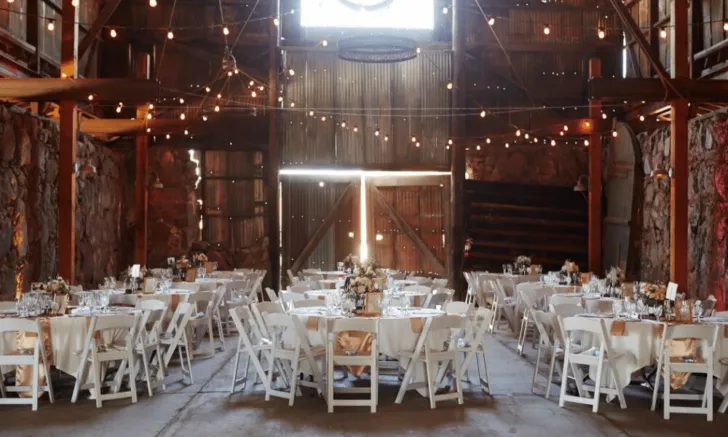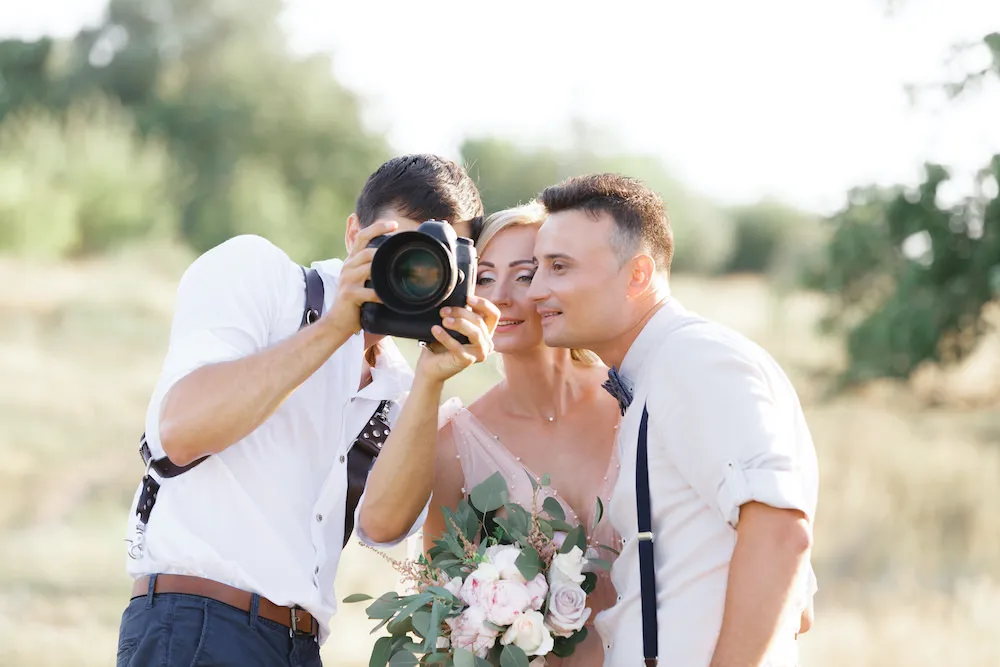Wedding Planning Phase 3: Making Wedding Decisions
Phase 3 of wedding planning is all about making important decisions. Check out this guide to hiring vendors, making attire and decor decisions, making menu selections, and more.

Once you’ve done your prep work and your initial planning, it’s time to start making wedding decisions! From booking your wedding venue and vendors to selecting your wedding day attire and decorative items and catering menu, you’ve got lots of choices to make, sister. So let’s buckle in and get down to business.
Searching for the Perfect Wedding Venue
Once you’ve got a relative size and location in mind, you can start your venue research. Selecting the spot to exchange vows with your soon-to-be-spouse is a huge wedding decision to make. Many of your other plans will hinge upon this choice.
Why? Because the venue and associated costs of rentals, reception costs, etc will take up a large portion of your wedding budget pie. So it’s important to pick a place that is appropriate for the wedding you want to have in terms of size, style, and budget. Couples working with a smaller than “average” budget may find it challenging to locate venue options that suits their needs. That’s why we’ve built our own wedding venue directory specifically to list as many possible options as possible.
You Wedding Venue Hunt Checklist
- Gather inspiration
- Research online and ask for recommendations
- Schedule venue tours
- Ask the important questions and get the answers
- Compare your options, costs, pros and cons
Researching wedding venues:
- Where to Find an Affordable Venue
- Browse Alternative Wedding Venues on Peerspace
- Savvy Wedding Venues as shared by our Facebook Group
- Check out our Wedding Directory, the Savvy Wedding Guide!
Things to consider when choosing a wedding venue:
- All-inclusive vs a la carte venues
- Dual-purpose or single-use venues
- Thinking outside the box for your wedding venue
Wedding Venue FAQ:
Is having separate venues or one venue a better choice for a wedding?
For simplicity’s sake, we love the concept of a dual-purpose venue or a completely on-site wedding. It’s simpler not only for you, but also for your guests.
What is typically included in a wedding venue rental?
This varies widely depending on the type, size, and style of venue you choose. There are all-inclusive venues that include basically everything in their rental price such as catering, decor, and entertainment, while others are more of a raw-space and require you to bring in most of the items you’ll need to put together your event.
Is it better to choose an all-inclusive venue vs a raw space?
Again, this can vary widely depending on each individual venue. The truth is, you’ll have to gather quotes and do the math to see which is a better financial decision for you. It’s also important to consider your time alongside the cost. Money is a renewable resource while time is not.
Where can I find an affordable wedding venue?
Browse Wedding Venues Here.
What questions do you need to ask your venue?
Get our Venue Guide Checklist here.

Searching for Your Wedding Vendors
Choosing your wedding vendors is a big decision and shouldn’t be taken lightly. You want to take the time to do proper research before signing contracts and paying deposits. But before you consider researching vendors, have you thought about different aspects of your wedding that you could tackle yourselves or with the help of family and friends? Prior to your vendor search, discuss and decide which areas of your wedding you want to DIY vs hiring wedding professionals. Need help? Check out this list of things to DIY vs hiring a pro.
In traditional weddings, the list of potential vendors one might hire to execute their plans could look like this:
- Wedding designer
- Wedding planner
- Caterer
- Bakery
- Rentals
- Photographer
- Videographer
- Ceremony Musicians
- DJ/Band
- Transportation
- Hair and Makeup
Tips for Hiring Vendors
- Considering Hiring Friends instead of Professional Vendors? Check out this post on getting wedding help from friends.
- Don’t miss these Questions to Ask Vendors
- Get Advice for Reviewing Contracts
- Find Affordable Vendors on Thumbtack
Choosing Wedding Attire
Selecting wedding day attire for yourself and your partner is another big decision to make! Are you planning to wear a wedding dress for your big day? You’ll definitely be wearing something on your wedding day, but what it looks like and how much it costs is entirely up to you. Whether you’d like to purchase a designer wedding dress, a used wedding dress, a casual wedding dress, a little white dress, a wedding jumpsuit, or even a colored wedding dress, you should start your dress search with a bit of an idea of what you like and what you feel great in.
Wedding Attire by Person/Participant
Wedding Dresses
Bridesmaids Dresses
Flower Girl Outfits
Ring Bearer Outfits
Mother of the Bride/Groom
Father of the Bride/Groom
Mens Wedding Rings/Wedding Bands
Women’s Wedding Rings/Bands
Wedding Guest Attire by Season
No matter the season, what you decide to wear will depend on the couple’s wedding dress code. Couples often include their wedding attire code on their wedding invitations or wedding website to inform their guests, so make sure to keep an eye out for the info. If it isn’t listed anywhere, reach out to the couple to ask if you’re unsure. Truthfully, even if the dress code is listed somewhere, it can still be tricky to choose the appropriate outfit.
Wedding attire variables: wedding season, event formality, time of day, temperature, and location (ie, indoor vs outdoor.) Let’s start with seasons:
WINTER
What to wear to a Winter Wedding
Some appropriate and common suggestions for Winter weddings are as follows: sequins, wool, shimmery fabric, rich floral patterns, jewel tones, black or navy, velvet, thick fabric, long dresses, etc.
SPRING
What to wear to a Spring Wedding
Some appropriate and common suggestions for Spring weddings are as follows: pastel tones, floral patterns, lightweight fabrics, sundresses, short or long styles, cocktail dresses, etc.
SUMMER
What to Wear to a Summer Wedding
Some appropriate and common suggestions for Summer weddings are as follows: bold or vibrant tones, bright floral patterns, tropical styles if a beach wedding, short dresses, sleeveless styles, spaghetti strap styles, midi skirt lengths, breezy maxi dresses, etc.
FALL
What to wear to a Fall Wedding
Some appropriate and common suggestions for Fall weddings are as follows: autumnal hues and jewel tones, moody floral patterns, short or long dresses, flutter sleeves, dresses with sweaters, etc.

PHASE 4
Moving on to Phase 4 of Wedding Planning
Once you’ve completed all these steps in Phase one, you’re ready to move on to Phase 4: Logistics & Execution!